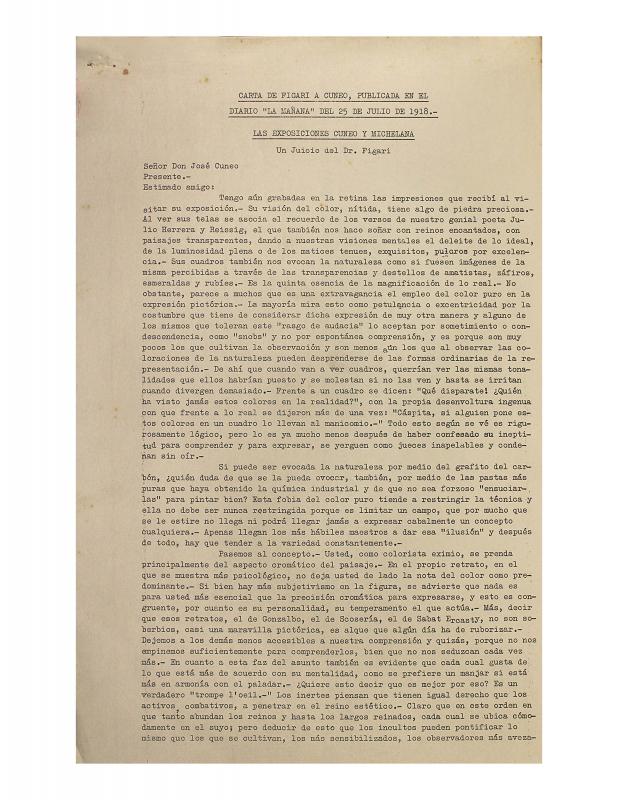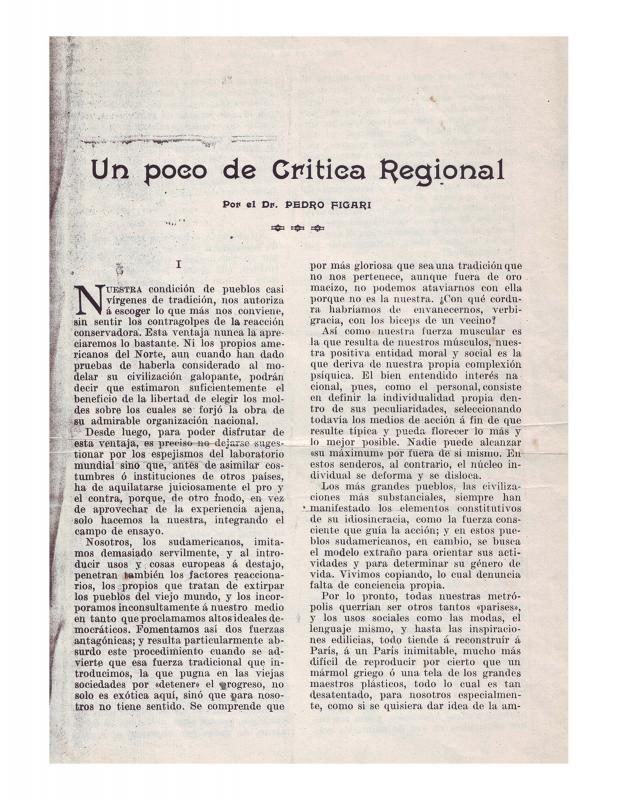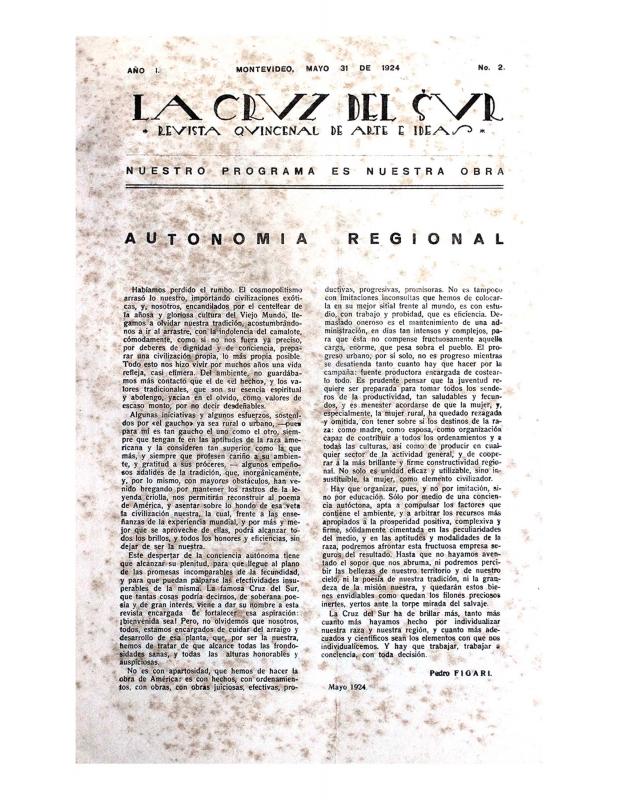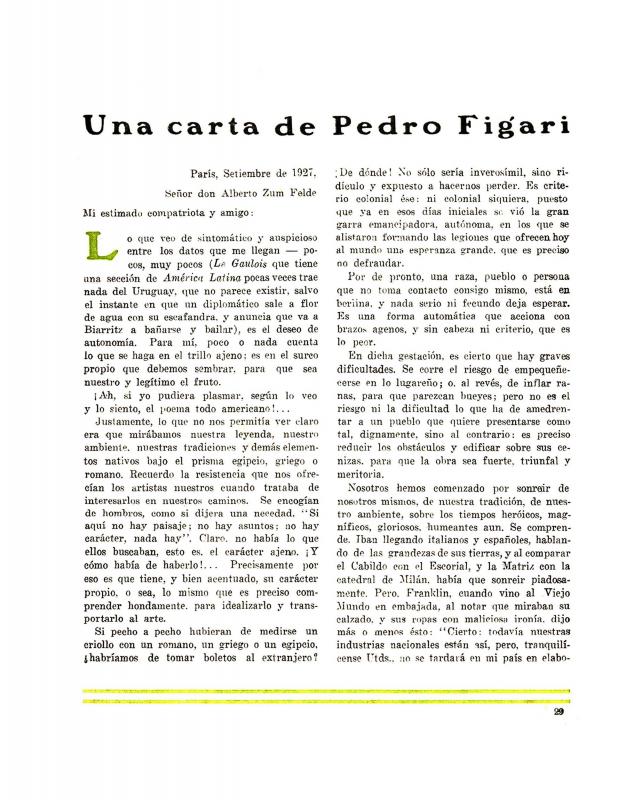Known for his art critique contributions to publications such as, first to Alfar (published first in La Coruña, Spain; later in Montevideo) and then secondly, to La Pluma (published in Montevideo), the art critic José M. [María] Podestá projected himself through his articles on the visual arts, literature and in particular, to his pioneering artistic critique on Uruguayan cinematography. This essay, however, centered on Pedro Figari’s (1861–1938) pictorial work that unfolded more or less intuitive technical proposals, which supposedly led to “unlearn” the traditional and valued beaten path of conservatism with a taste of the local capital city. For Podestá, Figari’s convictions led him to seek approximations to the American world. However, these possible coincidences with European sensibility (focusing on exotic and distant spaces) are not valid arguments to broach Figari’s “Americanism.” His work coalesces formal, sensitive and thematic elements bordering the image with a primordial an uncontaminated past universe, something that attracted the taste of the European, the vogue of black art, the frivolity of the Boulevards in Paris, the Argentinean fashion trends.
Podestá reflects on the cultural aspects intrinsic to his work as his natal legitimization grew as Europe began to sanction the value of his work. His motives for his inspirations of Americanism, even the folklore of Rio de la Plata that lacked precise documentation were a resignification of old times is manifested. Among them were the Afro-descendant customs, their servitude and festivities such as the Candombe (Uruguayan music and dance of African slaves) and the Murga (A Uruguayan and Argentinean festival dance) treated with soured and violent humor, the “Marzorca” of Juan Manuel de Rosas (an armed vigilante wing) in Argentina, the world of the South American lowlands (Las Pampas) and their farms, and colonial halls among other things. Podestá did not see it necessary to link Figari with past European trends, nor was there any examples of lineage distinguished in his work. He observed him as an “artist-intellectual” who having lived outside of the art medium became an artist at an advanced age with a brew of ideas (during years of public action) from his own imagination. What was significant for the author was the triumphant success the artist had in Europe. Therefore, his article denounced the delayed recognition of the artist in Uruguay, who made a mark, in his opinion, as representative of the artistic supremacy of European taste which, generally, overcomes and legitimizes local creativity.
[For further reading please refer to the ICAA digital archive for the following texts by Pedro Figari: “Las exposiciones Cuneo y Michelena [Un juicio de Pedro Figari]” (doc. no. 1233819), “Industrialización de la América Latina, Autonomía y Regionalismo: Carta abierta dirigida por el Dr. Pedro Figari al Excmo. Señor Presidente de la República Oriental del Uruguay” (doc. no. 1181222), “Un poco de crítica regional” (doc. no. 1258164); “América Autónoma: no basta instruir, hay que enseñar a trabajar” (doc. no. 795325), “Arte, técnica, crítica. Conferencia bajo el patrocinio de la Asociación Politécnica del Uruguay” (doc. no. 1263840), “Autonomía Regional” (doc. no. 1254337), “Una carta de Pedro Figari” (doc. no. 1197040)].





